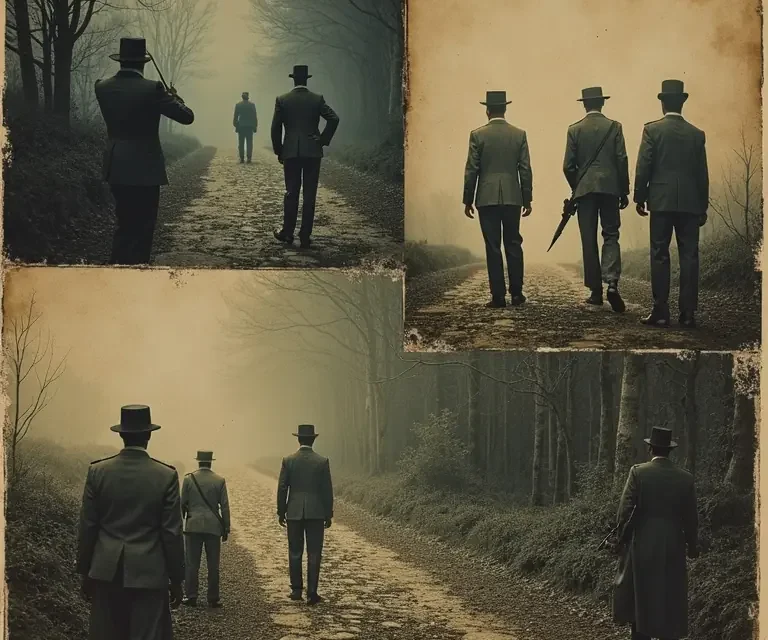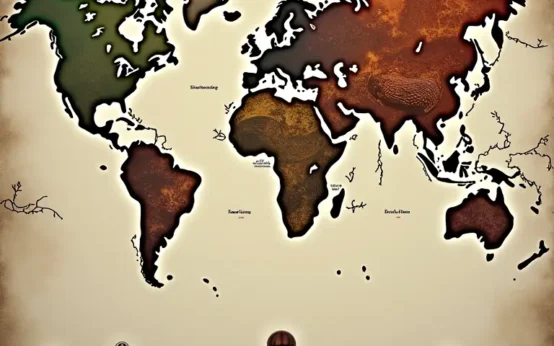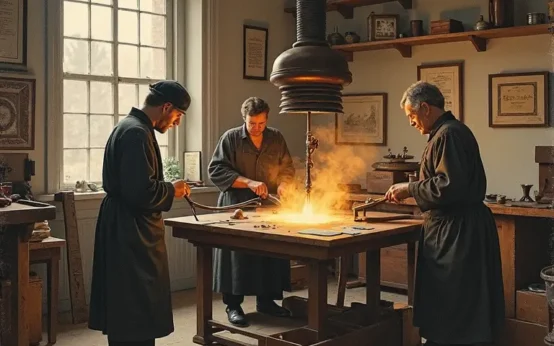History, as we learn it, feels solid, immutable. Textbooks present a narrative of events, dates, and figures, seemingly etched in stone. But what if that narrative wasn’t always accurate? What if, throughout the ages, individuals and groups deliberately crafted falsehoods, presenting them as historical truth? This isn’t about simple errors of recollection or differing interpretations; we’re diving into the world of deliberate historical hoaxes – fabrications designed to mislead, manipulate, or simply gain attention. Join us as we explore some of the most fascinating, and often surprising, cases of when the past wasn’t what it seemed.
The Allure of Fabrication: Why Fake the Past?
Before we delve into specific examples, it’s crucial to understand why people create historical hoaxes. The motivations are surprisingly diverse:
- Political Gain: Altering the past can legitimize present-day political agendas or demonize opponents. A fabricated lineage, a distorted treaty, or a conveniently “discovered” document can all serve a political purpose.
- Religious Zeal: Hoaxes have been employed to bolster religious beliefs, “prove” prophecies, or discredit rival faiths. The creation of spurious relics or altered scriptures falls into this category.
- Nationalism & Identity: Constructing a glorious (even if fictional) past can foster national pride and unity. This often involves exaggerating achievements or inventing heroic narratives.
- Financial Profit: Selling forged artifacts, “lost” manuscripts, or sensationalized historical accounts can be incredibly lucrative.
- Attention Seeking: Sometimes, the motive is simply notoriety. Some individuals are driven by a desire to shock, amaze, or simply become the center of attention, even if it means resorting to deception.
- Ideological Beliefs: People might create hoaxes to promote or validate a particular ideology, such as a specific interpretation of history or a conspiracy theory.
It’s important to remember that these motivations often intertwine. A hoax might be driven by both religious fervor and a desire for financial gain, for example.
The Piltdown Man: A Primordial Prank
One of the most famous hoaxes in scientific history is the Piltdown Man. In 1912, amateur archaeologist Charles Dawson claimed to have discovered fragments of a human-like skull and jaw in Piltdown Common, England. These remains seemed to represent a “missing link” between apes and humans – a primitive human with a relatively large braincase but ape-like jaw. The discovery was sensational, initially bolstering the idea that human evolution occurred in England.
For decades, Piltdown Man was a cornerstone of paleoanthropology. However, in 1953, scientific analysis revealed the truth: the skull fragments were genuine, but they belonged to a relatively modern human. The jawbone, however, was a cleverly crafted forgery – assembled from the jaw of an orangutan and filed down to appear more human.
The perpetrator remains a mystery, though several suspects have been proposed, including Dawson himself. The Piltdown Man hoax highlights the dangers of confirmation bias – the tendency to interpret evidence in a way that confirms pre-existing beliefs – and the importance of rigorous scientific scrutiny.
The Cardiff Giant: A Petrified Publicity Stunt
In 1869, a ten-foot-tall “petrified man” was “discovered” while digging a well on a farm in Cardiff, New York. The Cardiff Giant quickly became a national sensation. Thousands flocked to see the supposedly ancient artifact, paying fifty cents a head. Newspapers ran elaborate stories about its origins, speculating about a race of giants mentioned in the Bible.
The truth, however, was far less sensational. The Cardiff Giant was the creation of George Hull, an atheist farmer who wanted to mock religious literalism. Hull commissioned a sculptor to carve the statue from gypsum, then buried it on his farm, arranging for its “discovery” months later. He even spread false rumors about its authenticity.
Despite the eventual exposure of the hoax, the Cardiff Giant continued to draw crowds for years. It’s a testament to the public’s desire to believe in the extraordinary and the power of a well-executed publicity stunt.
Forged Documents and Literary Deceptions
Hoaxes aren’t limited to physical artifacts. Forged documents and literary fabrications have played a significant role in shaping historical narratives.
The Donation of Constantine
The Donation of Constantine is a forged Roman imperial decree dating from the 8th century. It purported to grant Pope Sylvester I and his successors dominion over Rome and the Western Roman Empire by Emperor Constantine the Great. For centuries, the document was accepted as genuine, providing the papacy with legal justification for its temporal power.
However, Renaissance scholars, particularly Lorenzo Valla, demonstrated in 1440 that the document was a forgery. Valla pointed to anachronisms in the language and historical inaccuracies. The document’s creation was likely motivated by the desire to strengthen the papacy’s political authority during a period of conflict with the Holy Roman Empire.
The Protocols of the Elders of Zion
Perhaps one of the most insidious and damaging hoaxes in history is The Protocols of the Elders of Zion. This antisemitic fabricated text, purportedly revealing a Jewish plan for global domination, first appeared in Russia in the early 20th century. It was quickly translated into numerous languages and used to justify persecution and violence against Jewish communities.
The Protocols were exposed as a plagiarism of earlier works, including a French political satire. Despite its proven falsity, the document continues to circulate today, fueling antisemitism and conspiracy theories. It serves as a stark reminder of the dangerous consequences of historical fabrication.

Relics and Religious Fraud
Religious history is particularly susceptible to hoaxes involving relics – physical objects believed to possess sacred significance. Throughout the Middle Ages and beyond, countless relics were fabricated or falsely attributed to saints and biblical figures.
The market for relics was booming, driven by the belief that possessing a fragment of the True Cross, a bone of a saint, or a piece of the Holy Grail could grant spiritual blessings or protection. This created a strong incentive for forgery. Often, these “relics” were simply cleverly crafted imitations or objects with dubious provenance.
One particularly audacious example is the story of the Mandylion of Edessa, a cloth said to bear the image of Jesus Christ created from his own face. Various versions of the Mandylion surfaced over the centuries, each claiming to be the original. The authenticity of these relics remains highly debated, but many scholars believe they were later creations designed to capitalize on religious devotion.
Modern Hoaxes and the Digital Age
Historical hoaxes haven’t disappeared with the advent of modern technology. In fact, the internet and social media have created new opportunities for fabrication and dissemination of false information.
One recent example is the “Tiananmen Square Massacre” photograph, which circulated widely online for years, purportedly showing a lone protester standing defiantly in front of a column of tanks during the 1989 Tiananmen Square protests. However, it was revealed that the photograph was taken several weeks before the massacre, in a different location.
The ease with which misinformation can spread online underscores the importance of critical thinking and fact-checking. We must be vigilant in evaluating the sources of information and questioning claims that seem too good (or too shocking) to be true.
Here’s a fascinating video exploring some of the hidden mysteries and potential fabrications surrounding historical artifacts and beliefs:
The Role of Conspiracy Theories
Many historical hoaxes are inextricably linked to conspiracy theories. These theories often propose that significant historical events were secretly orchestrated by powerful individuals or groups. While not all conspiracy theories are based on deliberate fabrications, they often rely on selective evidence, misinterpretations, and the creation of alternative narratives.
For example, theories surrounding the moon landing, the assassination of President Kennedy, and the events of 9/11 are often fueled by fabricated evidence or distorted accounts. The appeal of conspiracy theories lies in their ability to provide simple explanations for complex events and to offer a sense of control in a chaotic world.
Why Does it Matter?
The study of historical hoaxes isn’t just an exercise in debunking myths. It’s a crucial aspect of understanding how history is constructed, interpreted, and used. Recognizing the potential for fabrication helps us to:
- Develop Critical Thinking Skills: Hoaxes teach us to question assumptions, evaluate evidence, and consider alternative perspectives.
- Understand the Power of Propaganda: Hoaxes demonstrate how easily narratives can be manipulated to serve political or ideological agendas.
- Appreciate the Importance of Historical Accuracy: A truthful understanding of the past is essential for making informed decisions about the present and future.
- Recognize Bias: Hoaxes often reveal the biases of those who create them, as well as the biases of those who accept them.
Furthermore, exploring these cases can be surprisingly engaging. The stories behind these hoaxes are often filled with intrigue, deception, and fascinating characters. It’s a reminder that history is not simply a collection of facts, but a complex and often contested narrative.
Further Exploration
Interested in other strange happenings throughout history? Check out these articles:
- Celestial Oddities: Unexplained Phenomena in the Night Sky – Dive into the mysteries of unexplained aerial phenomena and historical astronomical anomalies.
- Culinary Curiosities: The Unexpected Origins of Common Foods – Discover the surprising and sometimes fabricated histories behind the foods we eat every day.
- Lost Languages: Unearthing Stories from Silent Tongues – Explore the challenges of deciphering lost languages and the potential for misinterpretation.
- Decoding Animal Superstitions: Origins & Global Beliefs – Uncover the historical roots of superstitions surrounding animals, many of which are based on folklore and fabricated narratives.
The world is full of mysteries, and the past is often stranger than fiction. By remaining skeptical, inquisitive, and committed to seeking truth, we can navigate the complexities of history and avoid being misled by those who seek to distort it.


 The Curious Acoustics of Historical Echo Chambers: Resonance, Ritual, and Revelation
The Curious Acoustics of Historical Echo Chambers: Resonance, Ritual, and Revelation  The Curious Cartography of Scent: Mapping Perfume Ingredients Through History
The Curious Cartography of Scent: Mapping Perfume Ingredients Through History  The Curious Lexicon of Lost Trades
The Curious Lexicon of Lost Trades  The Surprisingly Consistent Science of Historical Ice Harvesting – A Frozen History of Commerce & Preservation
The Surprisingly Consistent Science of Historical Ice Harvesting – A Frozen History of Commerce & Preservation  The Unexpectedly Consistent Science of Historical Buttonhooks – Fashion, Function & Forgotten Tools
The Unexpectedly Consistent Science of Historical Buttonhooks – Fashion, Function & Forgotten Tools  The Surprisingly Consistent Science of Historical Toy Soldiers – Miniature Warfare, Materials & Collective Play
The Surprisingly Consistent Science of Historical Toy Soldiers – Miniature Warfare, Materials & Collective Play